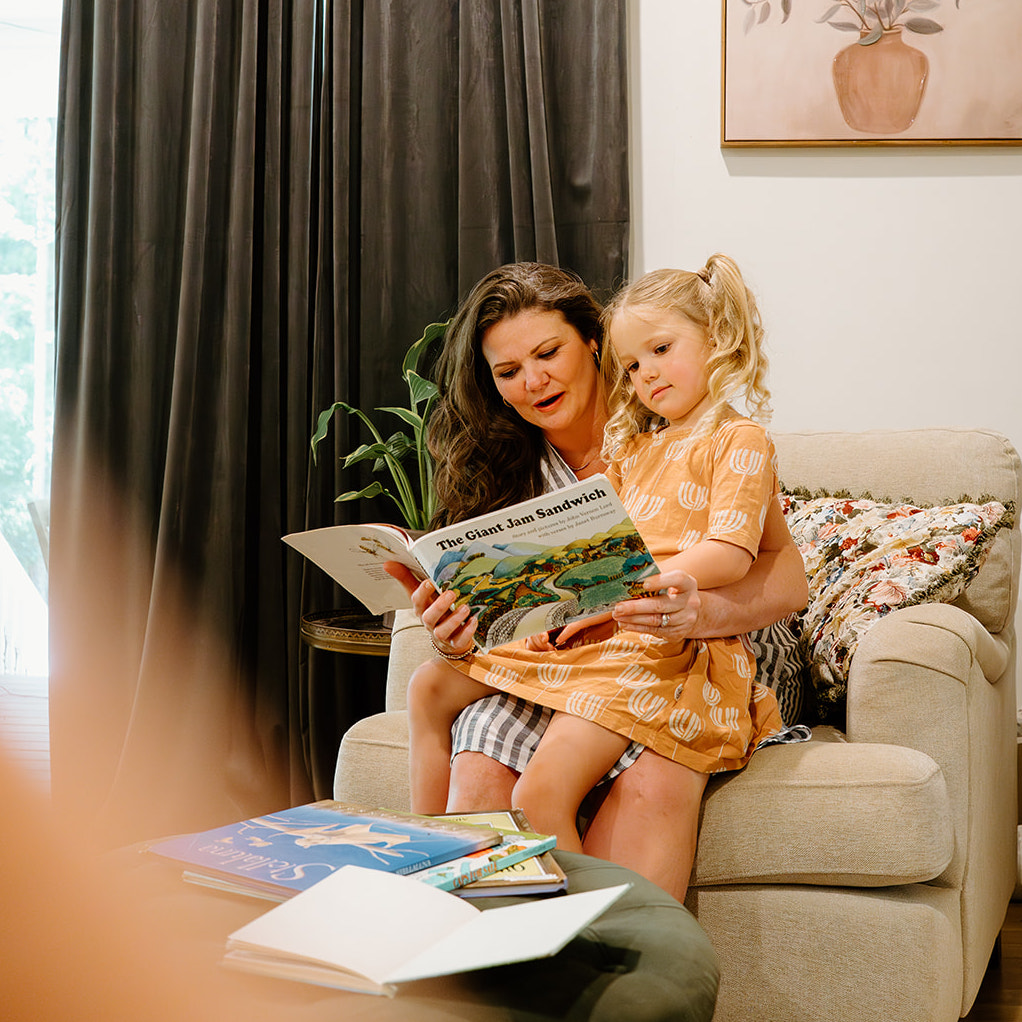Treehouse Nature Study, Primary Years is suitable for the whole family, and it’s especially engaging for younger learners! If you have preschoolers or kindergartners (ages 3-6), here’s how to maximize their experience with this curriculum.
Treehouse Nature Study, Primary Years uses elements like folk songs, hand rhymes, poetry, picture study, living books, nature notebooking, and hands-on activities to connect children with nature. For a 3-6 year-old child, this curriculum can easily serve as their core learning for the year.
Here are some tips and ideas to adapt this guide to get the most out of it for your little ones.
In this blog post:
- Tips for teaching and encouraging younger learners
- Adapting Treehouse Nature Study, Primary Years for preschool and kindergarten children
- Homeschool preschool learning resources from Treehouse Schoolhouse
Tips for teaching and encouraging younger learners
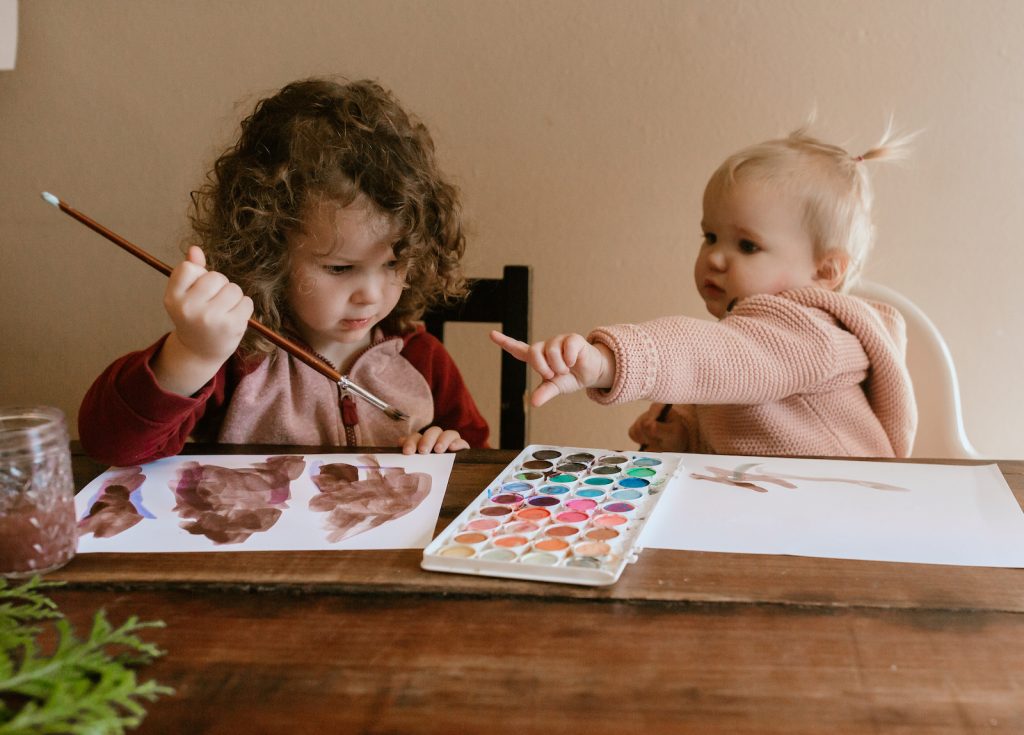
When using Treehouse Nature Study, Primary Years with your little ones, consider these ideas to make it even more impactful and enjoyable for them:
- Focus on engagement, not mastery: At this age, the goal is to spark curiosity and a love for learning, not to master concepts. Let them explore at their own pace.
- Prioritize hands-on activities: Young children learn best by doing. Emphasize participation and sensory experiences. Don’t worry if their “notebooking” is just a few scribbles or a drawing.
- Keep it short and sweet: Attention spans are shorter for young children. Break activities into smaller time blocks and follow their lead. If they lose interest, move on and come back to it later.
- Embrace repetition: Young children thrive on repetition. They’ll enjoy hearing the same folk songs, poems, or stories multiple times. This also helps solidify their learning.
- Utilize living books: Spend extra time enjoying the suggested living books. Their rich narratives are perfect for developing language skills and a love for reading.
- Time in nature is key: Make outdoor exploration a regular, joyful event. Let them touch, smell, and observe. These experiences are invaluable for connecting with the natural world.
Adapting Treehouse Nature Study, Primary Years for preschool and kindergarten
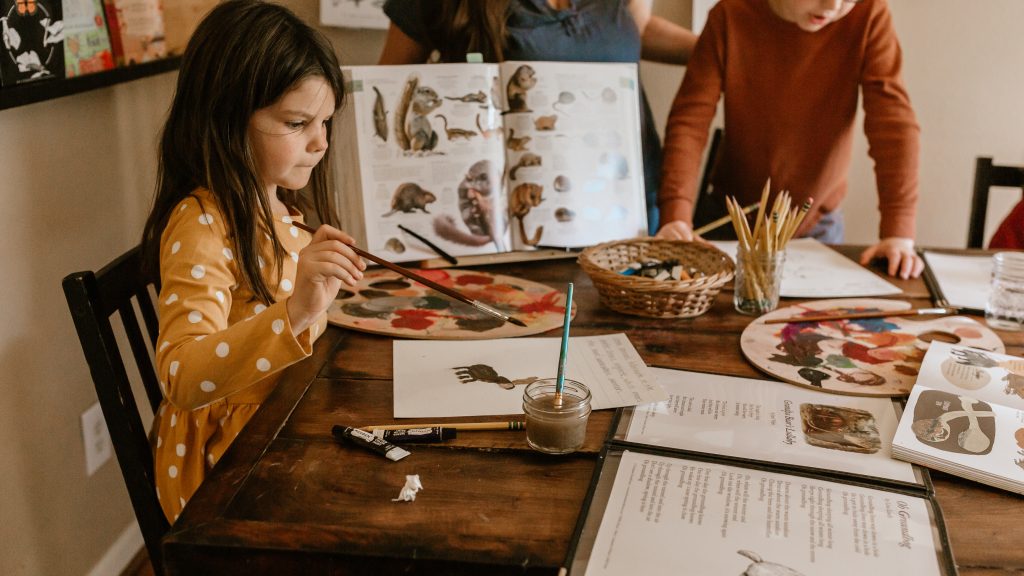
Here are my recommendations for tailoring Treehouse Nature Study, Primary Years for your small children, preschoolers, or toddlers who want to join in on the learning
Folk songs
Each week of Treehouse Nature Study, Primary Years offers a new folk song related to the nature theme. Some are classic songs that you may recall from your childhood and others are more modern with catchy tunes. Each song is directly linked to a Spotify playlist where you can listen and sing along. Have fun with your little ones each week by playing the song throughout your day. You could open up your day with the weekly folk song and some instruments!
Hand rhymes
Each week you will also introduce a new hand rhyme to your children that correlates with the theme. This element of the curriculum especially appeals to younger children. I recommend watching the hand rhyme a few times and practicing the motions before you begin your week by clicking the link to my YouTube channel. Included in each week is a lyric and hand motion sheet for you to use as a guide as you lead your children in the rhyme.
Poetry
You may be surprised with how much your young ones will enjoy the poetry included in Treehouse Nature Study, Primary Years. Each day in the lesson grid you will find a specific way to interact with the poem such as learning any unknown words, studying the poet, copying the poem, reciting the poem, and illustrating the poem. If you have really young ones who are not writing yet, I recommend skipping the copywork element and possibly selecting one portion of the poem to read each day and memorize, rather than the entire poem if it is a longer one.
Picture study
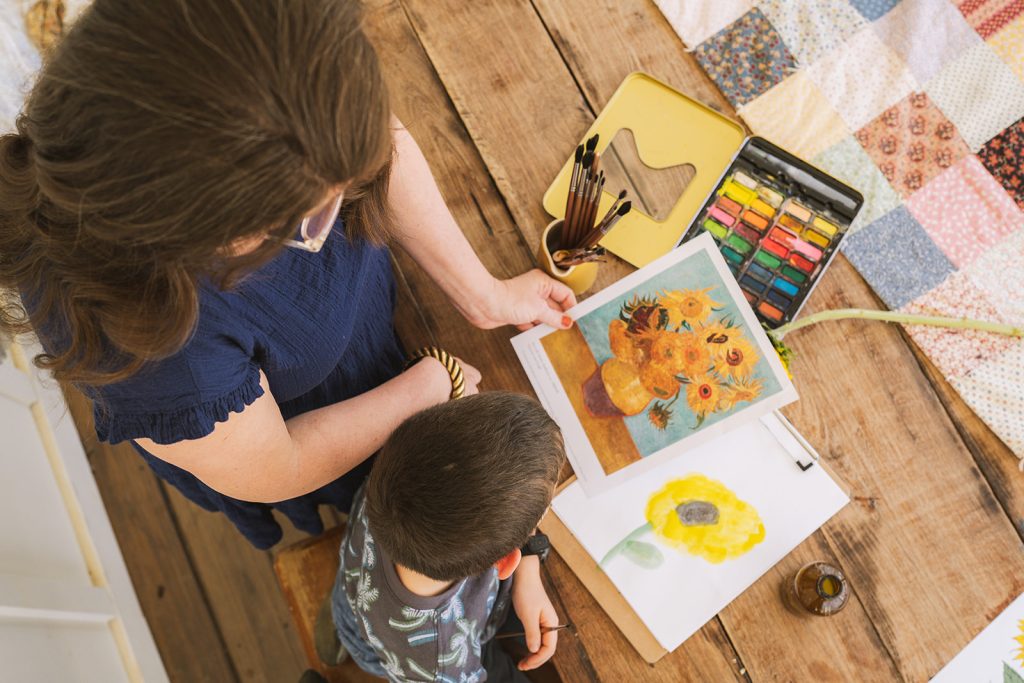
Young ones will love looking at the new artwork each week. Each day in the lesson grid you will find a specific way to interact with the artwork such as playing an observation memory game, prompting conversation through starter questions, researching the artist, and replicating the artwork. I specifically included discussion questions for you to ask that will appeal to younger learners and reinforce early learning concepts such as shapes, colors, and emotions.
Nature study book basket

Each week of Treehouse Nature Study, Primary Years offers a list of living books related to the nature theme. There is a list for non-fiction reads, fiction reads, and weekly selections for reference from The Handbook of Nature Study by Anna Botsford Comstock and the books in The Julia Rothman Collection. For your preschoolers and kindergarteners, I recommend trying to get as many of the books as possible from the fiction list and focusing on those in your read-aloud time. Your children may enjoy some of the non-fiction selections. However, I would use those more as a reference by not reading the entire book but choosing pieces they’re interested in. Your children may enjoy the illustrations and information in The Julia Rothman Collection as well. I recommend using The Handbook of Nature Study only as a resource for you as the instructor at this age. You could skip that element all together, or use it to educate yourself on the topics.
Nature connection
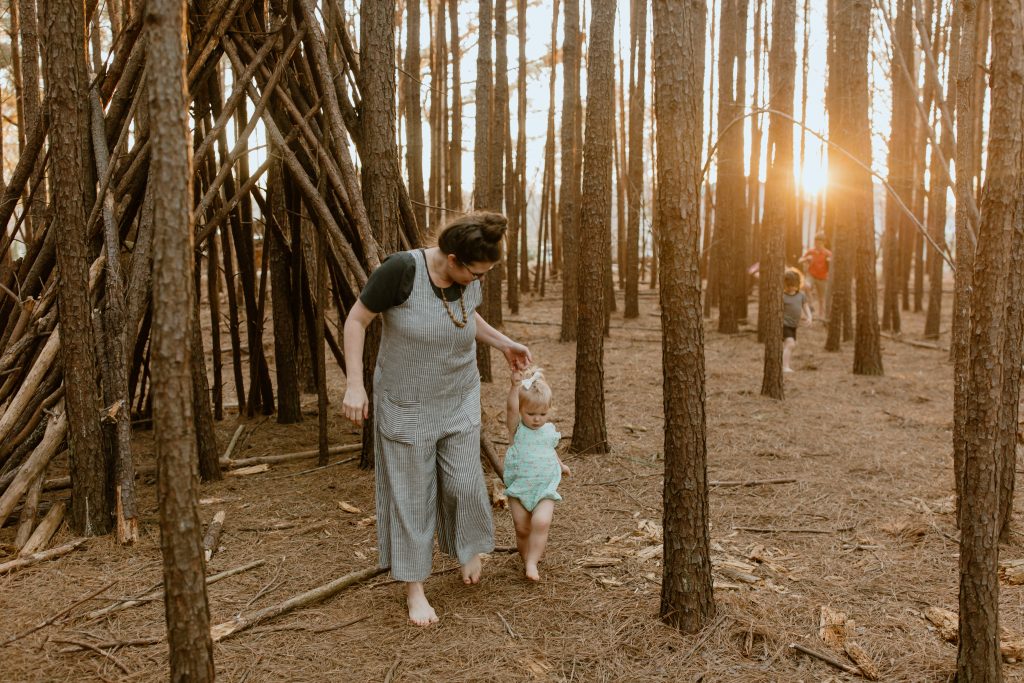
Each day offers a simple hands-on way for your children to connect with what they have been learning. You will notice that most of the activities are low-supply, low-prep, and repeat themselves throughout the study. This keeps things simple for you and easy for young ones to be involved. When writing the curriculum, I was mindful of all ages when choosing the activities. Some of the activities you will find are simple experiments, handicrafts, sensory play, nature walks, and recipes. This will likely be your child’s favorite part of their school time!
Nature notebooking

Wednesdays and Thursdays are reserved for Nature Notebooking. All ages can enjoy this practice at different levels. The main idea of notebooking is for your child to narrate what they have learned about the nature theme that week and record it in the form of writing and illustration. Evaluate how much your child can write to decide how to proceed with notebooking.
A few options are:
- Non-writing: As your child orally shares their thoughts with you, help form them into complete sentences and write them down on their page for them. Guide your child in creating illustrations that express the sentences. Another thought for really young ones would be to teach the letter that the theme begins with and have them write it on their page (A for apple, M for mushroom, etc.)
- Early writing and handwriting practice: As your child orally shares their thoughts with you, help form them into complete sentences and write them down with proper handwriting on lined paper. Have your child copy the sentences from the lined paper onto their notebook page. Guide them in creating illustrations that express the sentences.
Creating a well-rounded school year for your homeschool preschool child
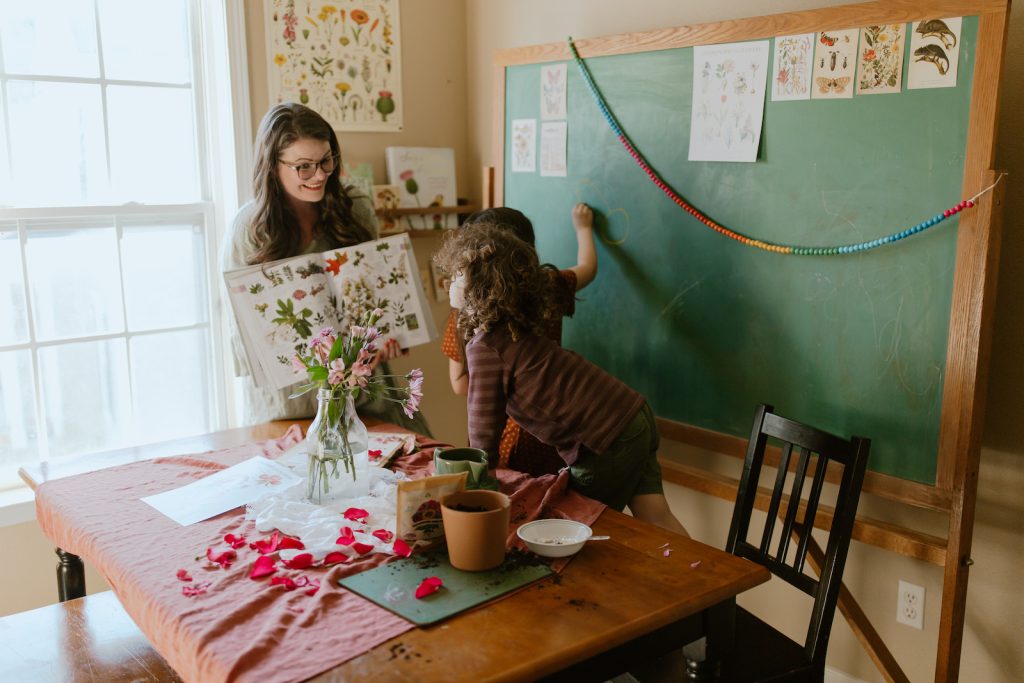
Depending on the age, interest, and abilities of your child, you may want to add in some early phonics and math lessons to your days. I personally don’t think this is important until closer to age 6. Until then, I recommend simply adding these things in naturally through the guide and through your days by doing activities like singing the ABCs, counting apple seeds, sorting leaves by color, and offering your child a movable alphabet to explore.
If you wanted to add in something more formal for math, we enjoyed The Good and Beautiful K for kindergarten. If your child is ready, you could also add in an early phonics program. I highly recommend Dash into Learning and ABC See Hear Do. Your child will also get the opportunity to practice writing through each week’s copywork pages and during Nature Study notebooking if you choose. You could also do hands-on learning activities with the Wonder of Nature Collection.
For preschool and kindergarten, there is really not much more you need! The only other things you may want to add are more picture books, some early chapter books, and some Bible stories from The Jesus Storybook Bible or a family devotional. Here is a list of my favorite preschool and early elementary book lists. You may also want to break from Treehouse Nature Study and use A Connected Christmas and An Expectant Easter at those times of the year to savor the holidays.
It goes without saying, but young children really learn the most from hours of play each day, loads of outside time, and much of your day being by your side doing household tasks like chores and cooking.
My hope is that Treehouse Nature Study, Primary Years gives you a gentle guide to invite your children into a deeper connection with you and with their world. Don’t view it as a checklist, but rather a menu and invitation.
Homeschool early learning resources from Treehouse Schoolhouse
Are you looking for more learning resources for your homeschool? Consider these best-selling products from Treehouse Schoolhouse that offer a gentle invitation to learning.
Treehouse Story School: Preschool

Treehouse Story School: Preschool is 32-weeks of gentle, literature-based curriculum designed for ages 2.5-5 years. This preschool curriculum that invites children to learn through the themes in stories they love. Each week will focus on a picture book, inviting children into connection and learning through music and movement, play-based narration, alphabet and number play, motor skills, practical life development, crafts, and baking together.
It would be a great fit for your toddler or preschooler if you are looking to incorporate multi-sensory, play-based learning while introducing them to timeless stories.
From toddler through upper preschool, this curriculum can be used year after year as you dive deeper into beloved, classic stories your family will cherish. Preview a free week here.
Daily Rhythm Bundle
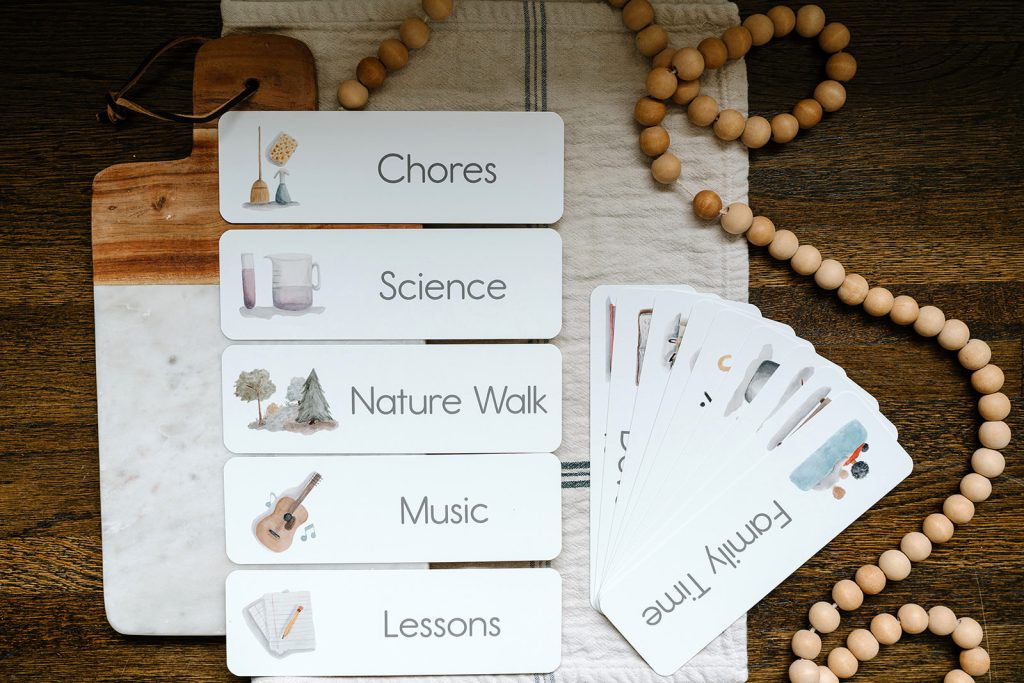
Children are highly visual–they can feel particularly out of control when they don’t know what to expect of their day. That’s why we recommend using a visual schedule to support your children from the time they are very young.
Rather than trying to stick to a rigid schedule, this set helps you create a general rhythm for your days. The daily rhythm worksheet is laminated and dry erase and the cards can be moved around offering you flexibility and adaptability.
Morning Time Bundle

This interactive, reusable set focuses on weather, seasons, moon phase, temperature, weather-appropriate clothing, date and time, and reading a calendar. With this daily bundle, your child will practice the skills of handwriting, tracing, copywork, and telling time. I recommend you print these materials and place them inside of a Morning Time Menu or dry-erase sleeve. Using dry-erase markers, your child can fill this bundle out over and over again.
We also offer a version of the Morning Time Bundle for those in our community who live in the Southern Hemisphere.


